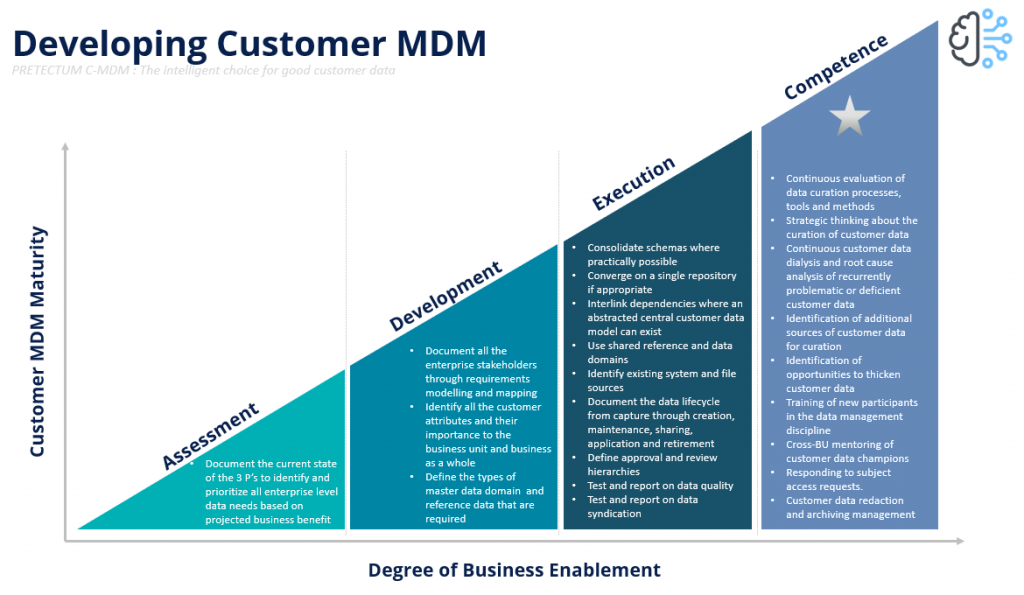Federated customer data governance is an approach to customer data management that allows organizations to implement data governance policies and controls in a decentralized manner across multiple domains or business units. This is an intrinsic characteristic of the Pretectum CMDM approach to Customer Master Data Management (CMDM)
Key aspects of federated data governance are the establishment of governance authorities within each data domain or business unit to define the rules, policies, and standards specific to that business or data domain. These domain-specific governance authorities work collaboratively to ensure alignment with overall organizational goals and data governance requirements. Where appropriate, enterprise or federated business data rules and structures are established and leveraged to influence and control the data creation and management processes.
Federated customer data governance supports the balance between decentralized data ownership/management and centralized data governance, allowing the business domains to work autonomously within their own defined interoperability standards, connecting to their business unit-specific data sources and sharing data internally.
This approach is essential for implementing a successful data mesh architecture, where data is treated as a product and managed in a decentralized manner. The key benefit of federated data governance for customer master data management is that it allows organizations to scale data governance practices across a complex, distributed data landscape while maintaining agility and business and data domain-specific requirements.

Federated data governance facilitates the centralization of data governance, data quality, and data lifecycle management across an organization.
There are several key steps for implementing a successful customer master data management program that need to be considered:
An organization should begin with an ‘as-is’ state analysis and stakeholder engagement. Understand the vision and key drivers, assess the current state, and document all the “pain points” and goals of the different data stakeholders.
Selecting tools that are contextually appropriate for the organization is an important decision point. Any tooling that is considered should offer a ready-to-run platform for business leaders to easily carry out their customer master data governance, allowing easy access and updating of master data, and the support of seamless integration with any, and all, third-party and internal systems as required.

The adoption of new or different tooling has to be with one goal in mind, namely the establishment of better data governance by integrating business operations, data collection, and data optimization requirements. This goes a long way toward ensuring the business runs smoothly and effectively, all the while, complying with privacy, data handling, and regulatory policies; in accordance with local, regional, and international law.
It should also be recognized and acknowledged, that maintaining a customer-centric approach is a concept that, just like customer data itself, is constantly evolving. Any customer master data management solution should be composable, adaptable, and evolve with the compliance, integration, and business needs of the organization, seamlessly. Only through the best possible customer data can an organization hope to ultimately build and maintain strong customer relationships.
The user experiences within the tools and applications should also be supportive of employees and employee tasking while also helping in the handling and safe access and sharing of specific customer data to accelerate digital transformation, meet business needs, and ultimately support the organization’s pursuit of exceeding customer expectations.
Role-based-Access-Controls (RBAC) are an important control element in ensuring that only the right people have access to the right data and platform functionality. Extensive auditing and logging is an important aspect that needs to be in place here also.
Any platform under consideration should also continuously maintain the customer master data to ensure accurate and up-to-date information, avoid discrepancies in the customer master, and maintain the highest possible data quality.
By considering all of these aspects, organizations can better implement an effective customer master data management program that delivers trusted, high-quality data to drive operational efficiency, improve customer experience, and enable better business decisions.


